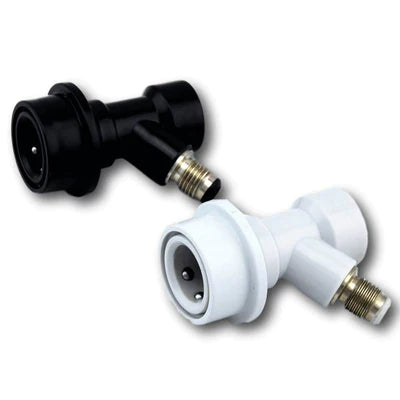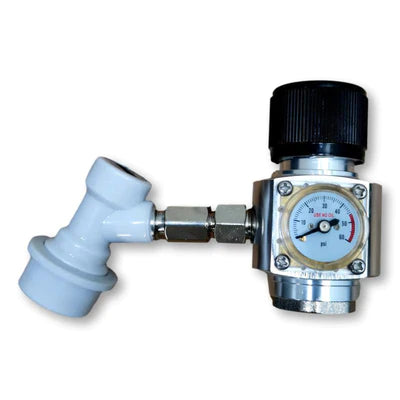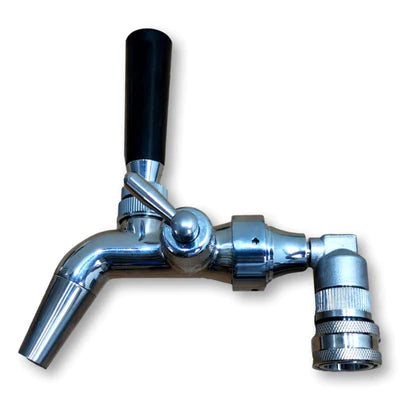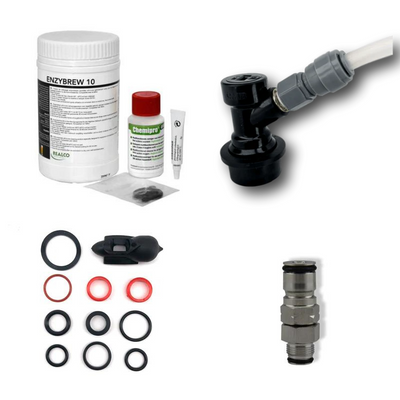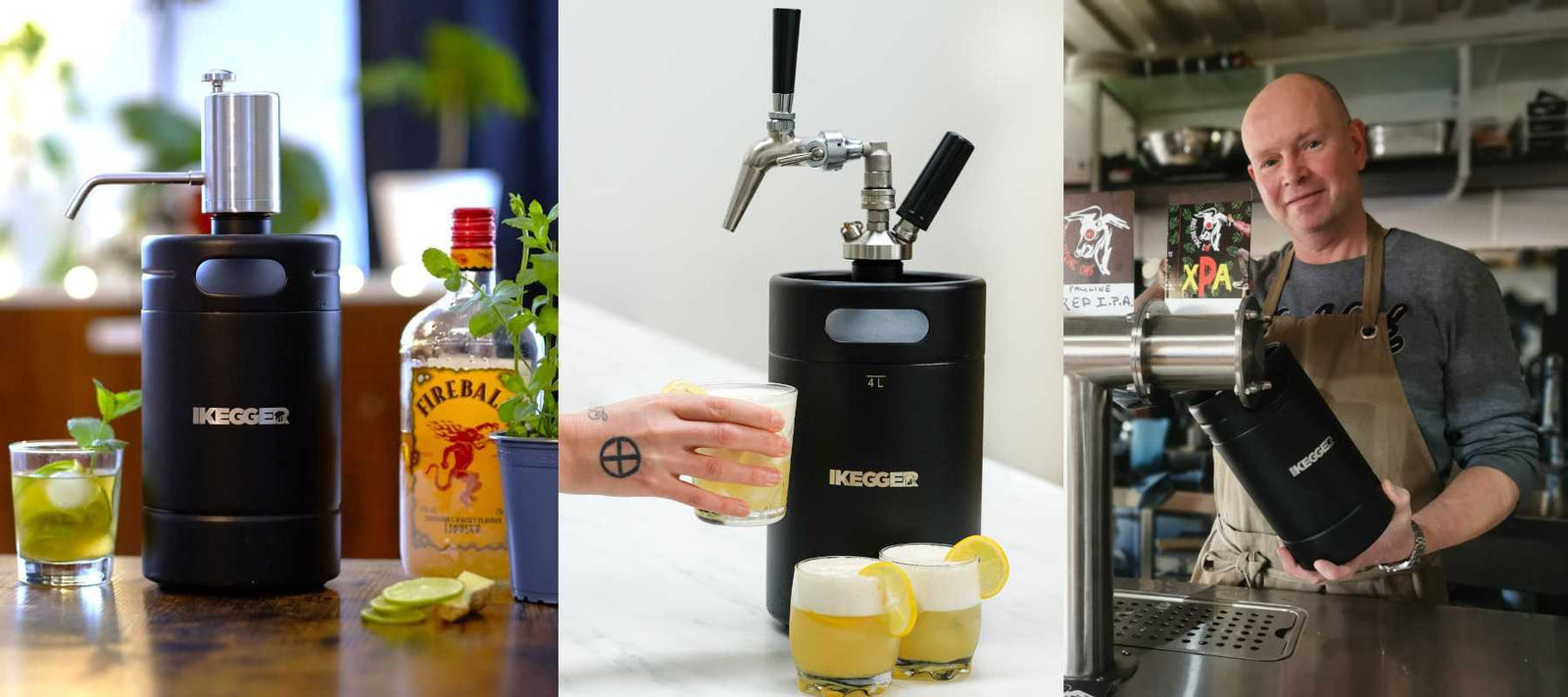
Mini Keg Filling Methods - iKegger Guide
Best Practise For All Filling Styles
-
Make sure your keg is clean and sanitised before filling but do not use dishwashing liquid (which will wreck the head on any beer you put in it afterwards).
See a video on sanitising your keg here
The best product to clean is sodium percarbonate which will remove any set on sediments / stickiness etc if you forget to rinse your keg out after it's empty.
The best sanitiser is a oxygen based no-rinse sanitiser which takes 2min to kill any bacteria and doesn't leave any odour of flavour.
We also have a package that includes both of those plus spare o-rings and lubricant to maintain them here
-
For any carbonated drink especially (beer, cider, kombucha, soda, G&T, rum and coke etc) it's best to chill the inside of your keg before filling. This will prevent foaming and loss of carbonation when the liquid hits warm metal.
With an insulated keg it's always best to chill inside the keg before filling as otherwise you may warm your drink a bit and once it's in the keg it takes a long time in the fridge before the inside starts getting colder.
-
It's best to flush the inside of the keg with CO2 or nitrogen before filling it to avoid your drink touching oxygen (it's only really important for beer, but it's best practise for all drinks).
You can do this by injecting CO2 into the open mouth of the keg or though the gas post and pulling the gas release valve a few times. CO2 is heavier than air so imagine your keg is now filled with liquid, the heavier liquid (your drink) goes to the bottom and lifts the lighter liquid (CO2) on top of it as you fill. This prevents your drink touching oxygen while you fill.
See a video on gas flushing an open mouth keg here
See a video on flushing a mini keg with ball lock posts here
Section heading

Filling From Cans And Bottles
-
You can absolutely fill your keg from cans or bottles, it's not the main reason we designed the mini keg (we'd like to prevent as many cans and bottles being used in the first place as possible) and it's not the best method but there are good reasons why you might want to:
- Pour from a beer tap. Most people prefer a pub quality draft beer over a can or bottle, plus it looks cool!
- No chance of broken glass in the pool, on the beach, in the park etc.
- Stays cold all day without needing to cart around an esky and ice (when using an iKegger insulated keg)
- You can transfer straight to a keg while at the shops and get the money for the cans / bottles back straight away. No rubbish piling up at home.
- Don't need to bring alll the rubbish with you (great in limited space like a caravan).
- Don't need to bring the rubbish home with you (if you are going into a national park, camping, on a boat etc)
-
- Chill the keg, with lid off for an insulated keg.
- Flush the keg with CO2
- Tilt the keg and pour slowly and with as little splashing as possible down the inside wall of the keg.
- Screw the lid on, attach your regulator to the gas post and put more CO2 in while pulling the release valve a couple of times to get rid of any air that did get in.
- Pressurise to the correct pressure for your drink (about 12-14psi for beer, 15-17psi for soda / mixed spirits).
- You can now disconnect your regulator till ready to drink.
- This method has the most chance of oxygen contact and you should be aware that craft beer may start to go bad within 48hours if you aren't careful (bulk breweries like Tooheys, XXXX, Carlton etc heat treat their beer and it will last longer).
- For canned and bottled sodas and RTDs (and making your own mixes) like G&T, Scotch & Dry, Rum & Coke etc a bit of oxygen contact will have no affect, just maintain the pressure in the keg and they will stay fresh and carbonated.
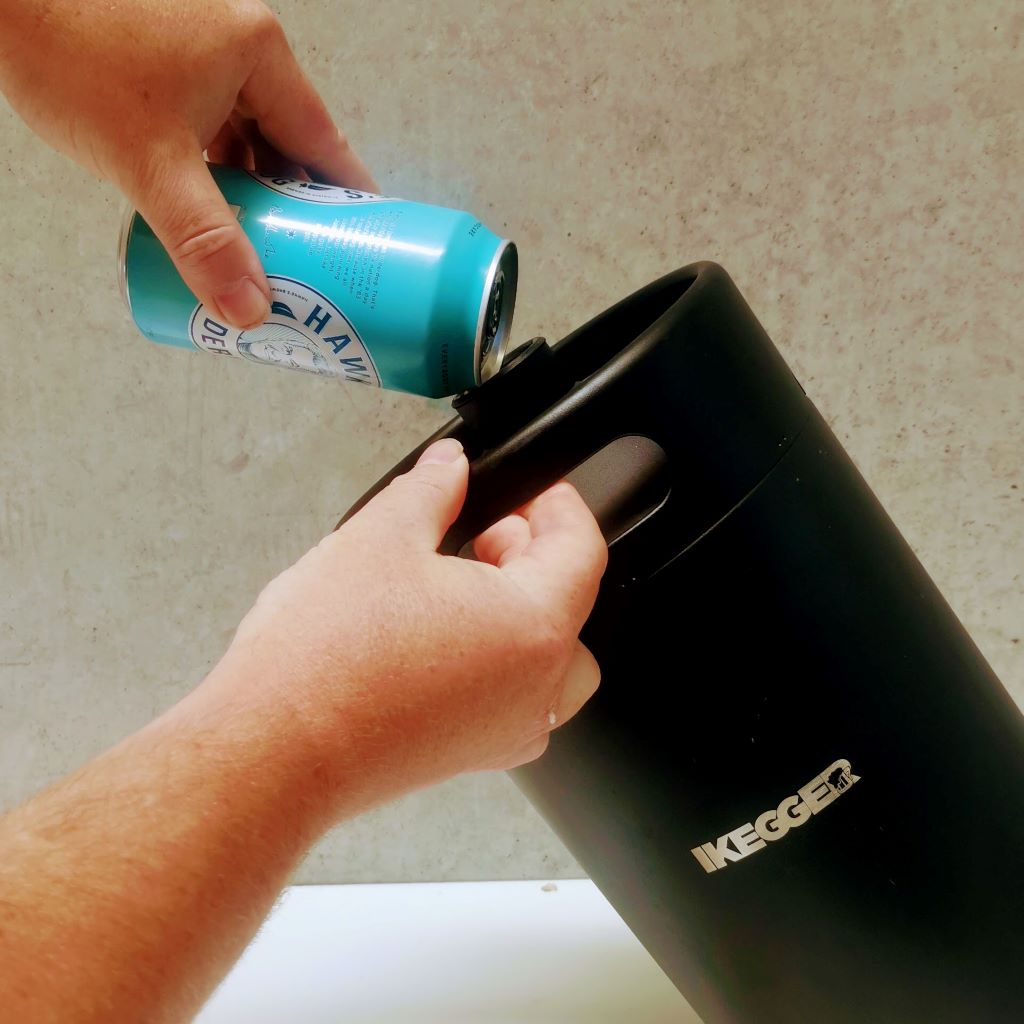
Filling From A Beer Tap
-
- Sanitise your keg
- Chill the inside of your keg (if at a brewery ask them to put it in their fridge for a while before filling.
- Flush your keg with CO2 (many breweries will do this themselves but ask them beforehand and do it yourself with your regulator if they don't. Unless you plan on drinking the keg within the next 24-48 hours).
- Attach a hose to the tap that reaches the bottom of the keg so you are filling within the "cushion" of CO2 and with minimal splashing.
- Once filled (it will probably overflow with foam for a bit before it's liquid to the top) screw in your cap or even better screw in a spear and again flush the filled keg and pressurise to 13psi approx.
- You can now keep the keg in the fridge till you want to drink it, the more careful you were to have no oxygen contact the longer the beer will last. At worst 24 hours for an unsanitised, unflushed keg up to weeks for a properly sanisited and carefully filled flushed keg.
-
- Sanitise, chill and flush your keg with CO2.
- You will need to leave your spear on the flushed keg and pressurise the keg to approximately 12psi.
- Ideally flush the filling line with CO2 as well.
- Disconnect your regulator and attach a flow stopper / spunding valve or iKegger BeerKeeper valve to the gas post.
- Attach the liquid post of the keg to the filling tap via a beer line.
- Turn on the filling tap and adjust the valve on the gas post till it is allowing a slow steady flow of gas to escape as the liquid fills the keg.
- If using a flow stopper or ikegger BeerKeeper the flow will stop automatically once the keg is full so simply turn of the tap and disconnect everything once done.
- If using a spunding valve turn off the tap once liquid starts coming through the valve.
- See a video using the iKegger BeerKeeper here
- See a video using the Flow Stopper here.
-
There are thousands of breweries, cideries and distilleries in Europe and more opening every day.
The best thing to do is google "brewery near me" and give them a call.
Your local pub or bottleshop may also be willing to do refills, if they have a takeaway license there is no reason they can't but it's up to them so just ask them nicely!
We also know of kombucha makers, cold brew coffee makers, iced tea and a bunch of other small businesses crying out to send you home with delicious drinks on tap so ask around!
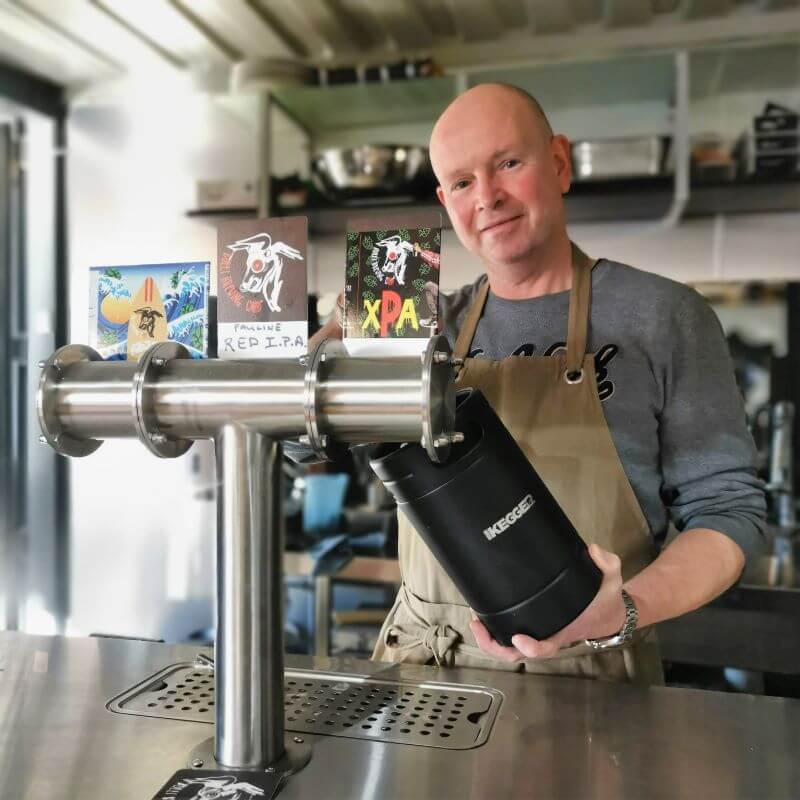
Filling From A Pressure Fermenter or Another Keg
-
- Sanitise, chill and flush your keg
- Pressurise the empty keg to just below the source keg or fermenter pressure.
- Connect the liquid posts together
- Attach a flow stopper or BeerKeeper to the gas post of the empty keg.
- Wait for the transfer to finish
-
Very similar to filling from a ball lock keg or fermenter, just that you add ball loock posts to the coupler so you can connect iKegger mini kegs easily.





